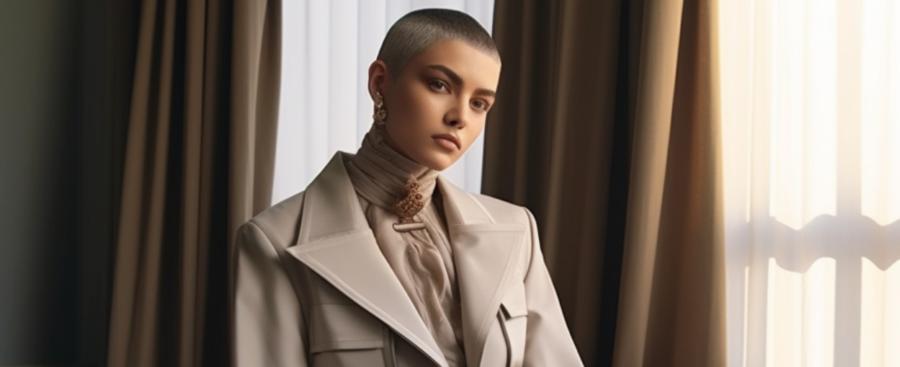The Rise of Androgynous Fashion

A Brief History of Androgynous Fashion
Time immemorial has witnessed the androgynous style taking center stage in the ever-evolving fashion grandstand. From the ancient civilizations of Mesopotamia to the Egyptians, Greeks, and Romans, adorning attire that did not conform to traditional gender roles was not unheard of. Fast forward to the 20th century, and we see iconic figures like Marlene Dietrich, David Bowie, and Prince, daringly trampling upon gender norms and embracing androgynous fashion in all its glory.It was in the 1960s that androgyny began to gain momentum in the fashion world, largely due to the counterculture and sexual revolution that were shaking societal frameworks to their very core. The 70s saw the rise of glam rock, with artists like Bowie and the New York Dolls making androgynous fashion a staple among their legions of fans.
Androgynous fashion has continued to evolve, finding its place in the 21st century with designers like Vivienne Westwood and Rei Kawakubo taking it to new heights. Today, androgyny is not just a fleeting trend but a statement of self-expression and fluidity, transcending the limitations imposed by societal expectations.
Breaking Down the Binary Barriers
The rise of androgynous fashion has undoubtedly contributed to the blurring of gender lines, challenging the conventional norms that dictate what men and women should wear. This has led to a growing acceptance of gender-fluidity, allowing individuals greater freedom to express themselves through clothing that defies gender binaries.As the fashion world becomes increasingly androgynous, the concept of "his" and "hers" clothing seems archaic. Designers are opting for garments that can be worn by anyone, regardless of their gender identity or expression. This shift towards the unisex is not only liberating for those who do not conform to traditional gender roles but also paves the way for a more inclusive, open-minded, and tolerant society.
Androgynous Fashion Icons
Over the years, numerous icons have embraced androgynous fashion, challenging stereotypes and defying expectations. A few of these trailblazers include:- David Bowie: The late, great David Bowie was a pioneer of androgynous fashion, famously donning his alter-ego Ziggy Stardust in the early 1970s. With his brightly colored, gender-bending outfits, Bowie epitomized the glam rock era and became a symbol of self-expression and individuality.
- Grace Jones: Jamaican-born singer, actress, and model Grace Jones rose to prominence in the 70s and 80s with her bold, androgynous style. Known for her distinct angular features and edgy fashion choices, Jones defied gender norms and paved the way for future androgynous icons.
- Janelle MonŠe: The multi-talented Janelle MonŠe is not only a singer, songwriter, and actress, but also a fearless advocate for androgynous fashion. MonŠe's signature black-and-white suit and tie ensemble embodies her commitment to challenging traditional gender norms in the entertainment industry.
- Ruby Rose: Australian model, actress, and television presenter Ruby Rose has been a prominent figure in androgynous fashion since her breakout role in the Netflix series, "Orange Is the New Black." Rose's unique style, which often incorporates elements from both menswear and womenswear, has garnered her a dedicated following of fans who admire her bold approach to fashion.
Embracing Androgynous Fashion: A Guide
For those who wish to experiment with androgynous fashion, here are a few tips and tricks to help you navigate this brave new world:- Start with the basics: Invest in versatile, unisex wardrobe staples such as tailored pants, button-up shirts, and blazers. These pieces can be mixed and matched to create a variety of androgynous looks.
- Accessorize: Adding accessories like hats, ties, and suspenders can instantly give your outfit an androgynous edge. However, be mindful not to overload on accessories - moderation is key.
- Experiment with layers: Layering can be a great way to create an androgynous look, especially when combining traditionally masculine and feminine pieces. For example, try wearing a lace camisole under a blazer or a sheer blouse over a button-up shirt.
- Embrace gender-neutral footwear: Opt for shoes that can be worn by both men and women, such as loafers, brogues, and combat boots. These styles are versatile and can add an androgynous touch to any outfit.
- Confidence is key: Ultimately, the most important aspect of pulling off an androgynous look is confidence. Embrace your individuality and proudly defy gender norms.
Article kindly provided by foreverinfashion.org
Latest Articles
- The Psychology of Tattoo Aesthetics: Why Certain Imagery Resonates
- Style That Works With Your Body, Not Against It
- Fashion Tourism on Wheels: Curated Shopping Routes Led by Chauffeur Guides
- The Charm of Certainty in a World of Indecision
- Can an Everyday T-Shirt Be Turned into a Modern Heirloom?
- Color, Ceremony, and the Psychology of Celebration
- Styling Graphic T-Shirts for Different Body Types
- Getting Kids to Wear Their Hats Without a Bribe or a Meltdown
- Mastering the Art of Being the Unnoticed Photographer
- Quiet Sportswear Moves Loudly
- Fashion's Most Misunderstood Color Is Brown
- Weight Matters When Cotton Gets Real
- SKU's Out for Summer: Why Your Warehouse Is Melting Down
- Ink as Accessory - How Tattoos Are Replacing Jewelry in Modern Style
- Accessories
- Jewellery
- Footwear
- Skirts and Dresses
- Shirts and Blouses
- Beauty and Makeup
- Fashion Photography
- Sustainable Fashion
- Street Style
- Fashion History
- Fashion Business
- Fashion Styling
- Fashion Events
- Plus-Size Fashion
- Men's Fashion
- Women's Fashion
- Fashion Blogging
- Fashion Trends
- Fashion Retailers
- Fashion Tips and Advice
- Fashion Business Startups
- Fashion Around the World
- Lingerie
- Sportswear
- Weddings

